Introduction to Full Body Workouts
A full body workout is a training routine designed to engage all major muscle groups in a single session. Unlike split training that isolates specific areas, full body workouts maximize efficiency, making them ideal for those with busy schedules or looking for overall strength and fitness improvement.
Whether you're training at home, at the gym, or using specialized equipment, full body workouts offer flexibility and adaptability. From Olympic lifts to kettlebell movements and bodyweight exercises, there's something for everyone.

Benefits of Full Body Workouts
- Time Efficiency: Targeting multiple muscle groups in one session reduces the need for separate workouts.
- Increased Calorie Burn: Engaging more muscles simultaneously boosts energy expenditure.
- Improved Functional Fitness: Enhances coordination and mimics real-life movements.
- Great for Beginners and Advanced Athletes: Scalable intensity makes it accessible for all levels.
Olympic Lifts: Power and Precision
Olympic lifts are compound movements that demand strength, coordination, and technique. They are staples in full body workout routines due to their ability to engage multiple muscle groups.
Clean and Press
The clean and press combines a powerful pull from the ground with an overhead press. It targets:
- Primary Muscles: Quads, glutes, shoulders
- Benefits: Builds explosive power and upper body strength
| Step-by-Step Guide |
| 1. Start with the barbell on the floor. |
| 2. Perform a clean to bring the barbell to shoulder height. |
| 3. Press the bar overhead. |
| 4. Lower the bar back to the floor with control. |
Snatch
This movement involves lifting a barbell from the ground to overhead in one motion. The snatch enhances coordination and agility.
Deadlift
A fundamental lift in any full body workout, the deadlift strengthens the posterior chain.
Kettlebell Movements: Versatility at Its Best
Kettlebell exercises provide a dynamic way to improve strength, endurance, and mobility.
Kettlebell Swing
The swing is a hallmark kettlebell movement that targets the glutes, hamstrings, and core. It’s a high-intensity exercise that also boosts cardiovascular fitness.
Turkish Get-Up
A slower, controlled movement that develops total-body stability and strength.
Goblet Squat
Holding a kettlebell at chest level while performing squats ensures proper form and targets the lower body.
Bodyweight Movements: Effective Anywhere
Bodyweight exercises require no equipment and are perfect for beginners and seasoned athletes alike.
Push-Ups
A classic exercise that works the chest, shoulders, and triceps. Variations like diamond push-ups increase difficulty.
Burpees
Combining strength and cardio, burpees engage the entire body for a quick calorie burn.
Pull-Ups
One of the best exercises for upper body strength, focusing on the back and biceps.
Full Body Workout at Home
Home workouts can be as effective as gym sessions with the right plan and minimal equipment.
Example Routine
| Exercise | Duration/Reps |
| Jumping Jacks | 1 minute |
| Push-Ups | 3 sets of 12 |
| Bodyweight Squats | 3 sets of 15 |
| Plank | 3 x 30 seconds |
Tips
- Use resistance bands or dumbbells for added intensity.
- Incorporate HIIT elements for cardio benefits.
Best Full Body Workout Machines
When it comes to maximizing your full body workout, choosing the right equipment can make a significant difference. Machines offer a controlled environment that minimizes injury risk while targeting multiple muscle groups effectively.
Rowing Machine
The rowing machine is an excellent choice for a full body workout. It combines cardiovascular endurance with strength training, targeting the legs, core, and upper body.
- Benefits: Improves cardiovascular fitness, builds endurance, and strengthens muscles.
- Tips: Maintain a neutral spine and avoid overusing your arms to pull.
Cable Crossover
This versatile machine allows for a wide range of movements, focusing on both upper and lower body muscle groups.
- Benefits: Builds chest, back, and arm strength while enhancing stability.
- Tips: Use a full range of motion for maximum muscle activation.
Leg Press
A staple for lower body strength, the leg press targets the quads, hamstrings, and glutes.
- Benefits: Builds lower body power without putting strain on the lower back.
- Tips: Adjust the seat to ensure proper knee alignment.
Full Body Dumbbell Workout
Dumbbells are a versatile and accessible option for full body workouts, allowing for dynamic and functional movements.
Exercises
- Dumbbell Squat to Press: Engages the lower body and shoulders.
- Dumbbell Deadlift: Strengthens the posterior chain.
- Dumbbell Row: Focuses on back and arm muscles.
Routine
- Warm-Up: 5-10 minutes of light cardio.
- Perform 3 sets of 8-12 reps for each exercise.
- Rest for 60 seconds between sets.
Progressions
Increase the weight gradually or add supersets to challenge your muscles further.
Full Body Kettlebell Workout
Kettlebells provide dynamic resistance and are ideal for improving strength, endurance, and coordination.
Exercises
- Kettlebell Swing: A powerful movement targeting the glutes and hamstrings.
- Turkish Get-Up: A complex exercise that improves stability and mobility.
- Kettlebell Clean and Press: Engages the entire body with emphasis on the shoulders and arms.
Routine
- Start with 10-15 minutes of mobility exercises.
- Perform each exercise for 3 sets of 12 reps.
- Incorporate intervals for added cardio benefits.
Progressions
Increase the weight of the kettlebell or reduce rest periods to enhance intensity.
Full Body Stretching Routine
Stretching is an essential component of any workout, promoting flexibility, recovery, and injury prevention.
Dynamic Stretches
- Leg Swings: Loosens the hip flexors and hamstrings.
- Arm Circles: Prepares the shoulders for lifting.
- Spinal Twists: Enhances mobility in the lower back.
Static Stretches
- Hamstring Stretch: Improves flexibility and relieves tightness.
- Child's Pose: Stretches the back and shoulders.
- Butterfly Stretch: Opens up the hips and groin.
Yoga-Based Stretches
- Downward Dog: A full-body stretch focusing on the hamstrings and shoulders.
- Cat-Cow Pose: Mobilizes the spine and improves posture.
Whole Body Workout Routine
Planning and consistency are key to a successful full body workout routine. Here’s how to get started:
Planning
- Identify your fitness goals (e.g., strength, endurance, weight loss).
- Allocate 3-4 days per week for workouts.
- Include a mix of strength, cardio, and flexibility exercises.
Tracking
- Use a fitness journal or app to monitor your progress.
- Track metrics such as weights lifted, reps completed, and workout duration.
Adjustments
- Gradually increase the intensity by adding weight, sets, or reps.
- Listen to your body and incorporate rest days to avoid overtraining.
With these routines and strategies, you can build a sustainable and effective full body workout plan tailored to your needs.
Conclusion
A full body workout is a versatile and efficient way to achieve your fitness goals. Whether you're training at home, in the gym, or using specialized equipment, these routines offer flexibility and scalability. Start your journey today and enjoy the benefits of improved strength, endurance, and overall health.
For a complete collection of exercises targeting every muscle group, visit our Exercise Library. Discover in-depth guides and specialized workouts to enhance your overall performance and support your fitness journey!
Elevate Your Core Workouts: Essential Resources
If you want to dive deeper into chest muscle anatomy and learn how to maximize your workouts, explore this comprehensive guide on ExRx.net.
Looking for advanced tips and variations? Bodybuilding.com offers expert insights for all fitness levels, whether you’re just starting or an experienced lifter refining your technique.
Remember, proper form and safety are key to preventing injuries and achieving results. For trusted advice on exercise safety and guidelines, visit Mayo Clinic.
